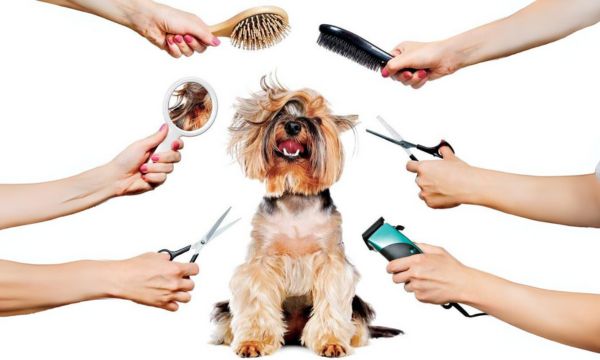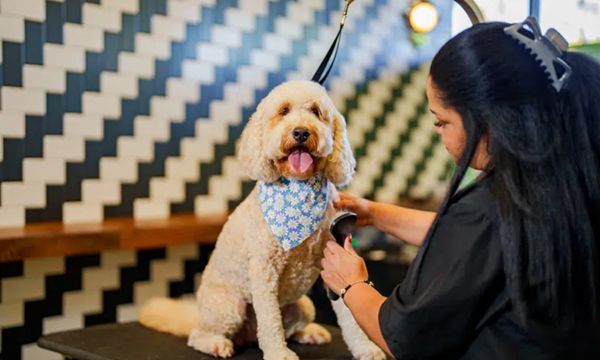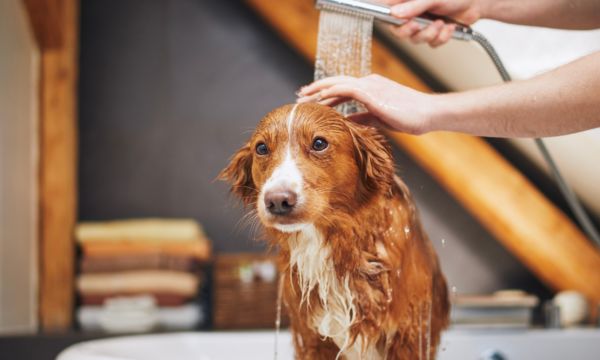Dog Grooming and Health
As a loving dog owner, you know how important it is to make sure your pet is happy and healthy. Proper cleaning is an important part of ensuring your dog’s overall health. In this guide, we discuss dog cleaning and how it affects your pet’s health. You will learn useful information that will help you make informed decisions.
The Link between Grooming and Health:
Grooming your dog is not just about maintaining its appearance; it is also important for his health. Grooming your pet regularly has more benefits than just giving your pet a shiny coat. It can also help prevent health problems. For example, when you groom your dog, you remove tangles and mats, improve blood flow, and distribute natural oils to keep the skin hydrated.
Solve Skin and Coat Problems:
Brushing their coat regularly can help prevent common skin and fur problems. Giving your dog the right number of washes with the right shampoo can help remove dirt, debris, and allergens that can cause skin irritation. Trimming your nails will prevent them from growing too long, which can cause pain and discomfort. In addition, cleaning your dog’s ears and teeth will make it less likely that he will get an infection or develop dental problems.
How to Deal with Boredom:
Most dogs lose fur naturally, but if you clean them regularly, you won’t have a problem. When you groom your dog’s body, you remove loose hair and leave less hair in the house. This is very important for breeds that shed hair easily.
Professional Grooming vs. DIY Grooming:
While simple grooming treatments can be done at home, there are some reasons to go to a professional. Professional groomers know how to work with different breeds and coat types, making the cleaning process thorough and safe. They can also look for health problems that may not be obvious.
Promoting a Healthy Bond:
Grooming can give you and your dog a chance to spend time together and bond. Grooming your pet on a regular basis builds trust and familiarity, which can make future visits to the vet or other grooming sessions less stressful for your pet.
How to Choose the Right Beauty Tools:
When cleaning your dog, it is important to use the right tools. Different breeds have different coat types and therefore require different brushes and combs. Talk to a professional groomer or your veterinarian to find out which tool is best for your dog. Some common tools that can help keep your dog’s coat in good condition include slicker brushes, bristles, and hair removal tools.
How Often Do They Groom Themselves?
The frequency with which your dog is groomed will depend on its breed, coat type and activity level. Dogs with longer coats or coats that tangle easily may need more frequent grooming, while dogs with shorter coats may not need as much grooming. Most people recommend brushing your dog at least a few times a week to keep your dog clean and tangle-free
Take Care of Certain Health Problems:
The way you care for it can also help solve some health problems. For example, cleaning your dog’s ears regularly can help prevent ear infections. This is especially true for floppy-eared breeds that tend to retain moisture. Taking care of your dog’s teeth while you groom him, such as brushing or feeding dental treats, can help maintain his oral health and prevent dental disease.
Benefits for Your Mind and Heart:
Grooming your dog is not only good for his physical health, but also for his mental and emotional health. Dogs love routine and attention, and cleaning gives them both. Now is the time to get to know your dog better, show him love and give him good treats. Many dogs enjoy the care they receive during grooming, which can make them happier and healthier overall.
Tips for Successful Grooming Sessions:
Start Early: Start cleaning your dog when he’s young so he can get used to the process.
Keep it Positive: Make cleaning a good experience for your pet with treats, toys and praise.
Be Gentle: Be gentle with your dog, especially around the ears and paws, which are sensitive areas.
Watch Out for the Signals: If your dog seems stressed, tense or in pain when you groom him, take a break and talk to a professional if necessary.
Stay Consistent: Regular grooming will keep your dog’s coat and health in good condition.
Conclusion:
Grooming your dog isn’t just for looks; this is important for the health and well-being of your pet. Regular grooming can give your pet friend healthier fur, prevent skin and dental problems, and strengthen the bond between you and your pet. Understanding your dog’s needs when it comes to grooming, using the right tools, and participating in the process with care and a good attitude will improve your dog’s quality of life.
Always remember: a clean dog is a happy dog, and a happy dog makes its owner happy. So take advantage of the grooming options to give your canine friends lots of love and affection while ensuring they stay healthy for years to come.
FAQs:
1. How often should I groom my dog?
The frequency of grooming depends on your dog’s breed, coat type and activity level. Dogs with longer or thicker coats may need grooming every 4 to 6 weeks, while short-haired breeds need grooming less frequently, perhaps every 8 to 12 weeks. Regular brushing at home several times a week is recommended for all dogs.
2. Can I take care of my dog at home or do I need professional help?
You can certainly groom your dog at home, especially basic tasks such as brushing, cleaning ears, and brushing teeth. However, seeking professional grooming services also brings benefits, such as the expertise of a beautician who can treat different types of coats and identify possible health problems.
3. My dog does not like grooming. What can I do to make it a positive experience?
If your dog is hesitant about grooming, start with shorter times and gradually increase the time as he becomes more comfortable. Use treats, toys, and praise to build positive connections. If the problem persists, consult a professional trainer or groomer for advice.
4. How can grooming prevent health problems in dogs?
Grooming can prevent a variety of health problems by keeping your coat clean and healthy, preventing tangles and tangles, and solving problems such as ear infections and dental problems. Regular grooming allows you to spot any abnormalities or changes in your dog’s health early.
5. Do different dog breeds have different grooming habits?
Yes, different breeds have different grooming needs. Dogs with long hair may need more frequent grooming and regular trimming to prevent tangles. Breeds with shorter coats may require less grooming. Consult a wide range of specific resources or a professional beautician for tailored advice.
Be sure to check out our article: Trendy Dog Haircuts and Styles. You’ll be surprised at how it will help you clarify doubts on the subject.
 Dog Grooming Tools and Equipment
Dog Grooming Tools and Equipment
Grooming is an important part of being a responsible pet owner, and it’s no different when it comes to our furry friends, dogs. Regular grooming not […]
Keep reading Welcome to the Dog Spa and Wellness Center
Welcome to the Dog Spa and Wellness Center
Treat your furry friend to the ultimate relaxing and rejuvenating experience at our state-of-the-art spa and wellness center for dogs. Our team of professional, board-certified pet […]
Keep reading Grooming Tips for Senior Dogs
Grooming Tips for Senior Dogs
As our furry friends get older, their needs change and require extra care and attention to ensure their health. Grooming is an important aspect of senior […]
Keep reading